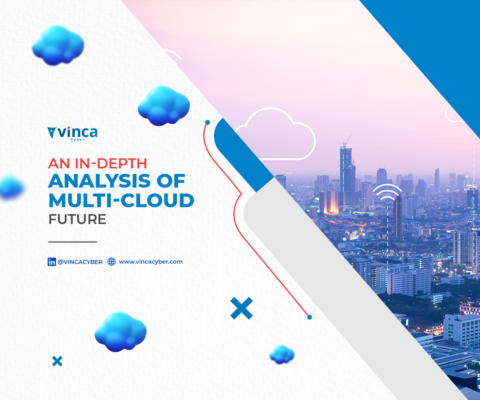According to Gartner, 81% of organisations are working with two or more public cloud providers. It shows how even before the realisation of multi-cloud as a future, we are already into it. Cyber experts at Vinca Cyber did an in-depth analysis of the multi-cloud future and how organisations can leverage best practices without worrying about evolving threat landscapes.
What is Multi-Cloud?
Multi-cloud means using two or more public cloud service providers to monitor, optimize, and secure applications and workloads across the data centre, edge, and any cloud environment. This has provided enterprises with flexibility and cost control, and also reduced their dependence on a single cloud hosting provider.
As a result, more companies than ever before are using public cloud providers to help them better handle the storage and data needs of their company with faster response times and business continuity even in the event of a system outage.
The Advantages of Multi-Cloud
- Flexibility and choice
The adoption of multi-cloud for enterprises brings flexibility and choice to mix and match services to create the perfect infrastructure for evolving enterprise needs. This has improved the efficiency and cut down on the limitations of single clouds.
- Redundancy and failover
Multi-cloud eliminates exhausting reliance on a single system, and even in the event of a failover, your business can continue to operate with the others. In recent years, remote working has reported failover due to over-dependence on one system.
- Management of costs and usability
Any enterprise with multi-cloud will have the upper hand in research and negotiation in terms of use cases and price differences between providers to get the best value for their money.
- Improved Time and Performance
It’s simple math when an enterprise can spread workloads across multiple providers and manage projects and workloads more efficiently, enabling better performance. In 2021, it has been reported that using multi-cloud has boosted project delivery and productivity by more than 10-folds.
Some challenges to understand and tackle before planning and executing a multi-cloud service:
- Management overhead
Initial management of multiple cloud providers can be complex, time-consuming, and can incur some overhead expenses. Further, it takes time for the workforce to adapt and make the best use of cases.
2. Security risks
This has been one of the biggest obstacles for SMEs already lagging in advanced security infrastructure to manage multiple end-points to avoid data breaches and other security threats.
But the good part is that proper scanning, planning, and execution with cyber experts and advanced security tools can completely erase the chapter of multi-cloud challenges for SMEs or any business in general.
Multi-cloud enterprise use cases
Save money by avoiding vendor lock-in.
If an enterprise relies on a single cloud provider, it can be locked into its platform and become dependent on its services. This can be costly and complicated if you need to switch providers in the future.
Scalability
For evolving user experience and business expansion, a single cloud can’t offer smooth scalability. Modern apps are designed to be dynamic and highly adaptive to changes in demand. Multi-cloud enables applications and servers’ scalability without any cost of overhauling existing cloud infrastructure.
Disaster recovery
A multi-cloud strategy can help improve disaster recovery planning. By distributing workloads across multiple providers, organisations can mitigate the risks associated with anyone provider going offline. This can help ensure business continuity in the event of an unexpected outage.
Conclusion
The future of cloud computing is multi-cloud. This means that businesses will use a mix of different cloud providers to meet their needs. Each provider has its strengths and weaknesses, so using multiple providers allows businesses to get the best of all worlds.
We at Vinca Cyber are committed to mitigating challenges associated with multi-cloud for our clients and businesses looking to build tech-forward business excellence. Our work methodology of proper scanning, planning and execution outweighs the challenges, to enable multi-cloud as the way forward business companion regardless of organization size.

